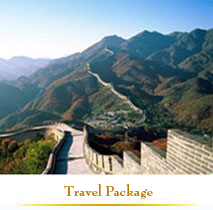
The temple complex was constructed from 1406 to 1420 during the reign of the Yongle Emperor, who was also responsible for the construction of the Forbidden City in Beijing. The complex was extended and renamed Temple of Heaven during the reign of the Jiajing Emperor in the 16th century. The Jiajing Emperor also built three other prominent temples in Beijing, the Temple of Sun in the east (????), the Temple of Earth in the north (????), and the Temple of Moon in the west (????). The Temple of Heaven was renovated in the 18th century under the Qianlong Emperor.
In 1914, Yuan Shih-kai, then President of the Republic of China, performed a Ming prayer ceremony at the temple, as part of an effort to have himself declared Emperor of China. Its final use in the modern era was by Emperor Puyi in 1934, to sanctify the founding of Manchukuo.[1]
The Temple of Heaven was inscribed as a UNESCO World Heritage Site in 1998 and was described as "a masterpiece of architecture and landscape design which simply and graphically illustrates a cosmogony of great importance for the evolution of one of the world’s great civilizations..." as the "symbolic layout and design of the Temple of Heaven had a profound influence on architecture and planning in the Far East over many centuries."[2]
According to Xinhua, in early 2005, the Temple of Heaven underwent a 47 million yuan (5.9 million USD) restoration in preparation for the 2008 Beijing Summer Olympics and the restoration was completed on May 1st, 2006.
The surrounding of the Temple of Heaven is also a very popular park for exercising.
Buildings and layout
The Temple grounds covers 2.73 km² of parkland, and comprises three main groups of constructions, all built according to strict philosophical requirements:
- The Hall of Prayer for Good Harvests (?í?ê??) is a magnificent triple-gabled circular building, 36 metres in diameter and 38 metres tall, built on three levels of marble stone base, where the Emperor prayed for good harvests. The building is completely wooden, with no nails.
- The Imperial Vault of Heaven (???·??) is a single-gabled circular building, built on a single level of marble stone base. It is located south of the Hall of Prayer for Good Harvests and resembles it, but is smaller. It is surrounded by a smooth circular wall, the Echo Wall, that can transmit sounds over large distances. The Imperial Vault is connected to the Hall of Prayer by the Vermilion Steps Bridge, a 360 meter long raised walkway that slowly ascends from the Vault to the Hall of Prayer.
- The Circular Mound Altar (à÷????) is the altar proper, located south of the Imperial Vault of Heaven. It is an empty circular platform on three levels of marble stones, where the Emperor prayed for favorable weather. It was built in 1530 by the Jiajing Emperor and rebuilt in 1740.
Ceremony
In ancient China, the Emperor of China was regarded as the Son of Heaven, who administered earthly matters on behalf of, and representing, heavenly authority. To be seen to be showing respect to the source of his authority, in the form of sacrifices to heaven, was extremely important. The temple was built for these ceremonies, mostly comprising prayers for good harvests.
Twice a year the Emperor and all his retinue would move from the Forbidden city through Beijing to encamp within the complex, wearing special robes and abstaining from eating meat. No ordinary Chinese was allowed to view this procession or the following ceremony. In the temple complex the Emperor would personally pray to Heaven for good harvests. The highpoint of the ceremony at the winter solstice was performed by the Emperor on the Earthly Mount. The ceremony had to be perfectly completed; it was widely held that the smallest of mistakes would constitute a bad omen for the whole nation in the coming year.
Symbolism
Earth was represented by a square and Heaven by a circle; several features of the temple complex symbolize the connection of Heaven and Earth, of circle and square. The whole temple complex is surrounded by two cordons of walls; the outer wall has a taller, semi-circular northern end, representing Heaven, and a shorter, rectangular southern end, representing the Earth. Both the Hall of Prayer for Good Harvests and the Circular Mound Altar are round, each standing on a square yard, again representing Heaven and Earth.
The number nine represents the Emperor and is evident in the design of the Circular Mound Altar: a single round marmor plate is surrounded by a ring of nine plates, then a ring of 18 plates, and so on for a total of nine surrounding rings, the outermost having 9×9 plates.
The Hall of Prayer for Good Harvests has four inner, twelve middle and twelve outer pillars, representing the four seasons, twelve months and twelve traditional Chinese hours respectively. Combined together, the twelve middle and twelve outer pillars represent the traditional solar term.
All the buildings within the Temple have special dark blue roof tiles, representing the Heaven.
The Seven-Star Stone Group, east of the Hall of Prayer for Good Harvest, represents the seven peaks of Taishan Mountain, a place of Heaven worship in classical China.
From:http://en.wikipedia.org/wiki/Temple_of_Heaven
Address: ROOM 103, No 10 Ti Yu Guan Rd, Chongwen District, Beijing
copyright@2010北京百达旅游有限公司




